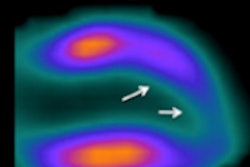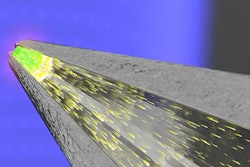Dear Molecular Imaging Insider,
The early detection of any form of cancer is a great benefit to any patient afflicted with the disease. While it may not be a common condition, early-stage oral cancer can be devastating for patients, and starting the appropriate treatment as soon as possible can provide hope and avoid additional complications.
Dutch researchers are recommending the addition of SPECT/CT to planar lymphoscintigraphy to find previously undetected sentinel lymph nodes in cases of oral cancer, giving surgeons a better guide to biopsies and more effective treatment. Details on their study results are available by clicking here.
Another Dutch group investigated the role SPECT gamma cameras with cadmium zinc telluride-based (CZT) digital detectors might play in predicting the chances for an adverse event among seemingly healthy patients. With CZT-based SPECT cameras, the group was able to confirm that as the degree of abnormal myocardial perfusion imaging results increased, so did the chances of these people experiencing a cardiac event within three years.
In fact, CZT digital detector technology, advanced quantification software programs, and novel radiotracers in SPECT and PET imaging will lead to major advances in research and clinical applications for cardiovascular disease, according to two European researchers actively involved in cardiovascular health. The role of SPECT and PET in this clinical application is made even more relevant given that more than 49 million people on the continent are afflicted with cardiovascular conditions.
As clinicians keep a watchful eye for unnecessary radiation exposure among patients, one large nuclear cardiology lab reduced its average radiation dose by 60% over the past eight years. The study included more than 18,000 SPECT myocardial perfusion imaging scans performed between 2009 and 2016 and offers very helpful advice to other facilities on how to achieve similar results.
From Germany and Slovenia comes a study that could advance clinical trials of multimodality imaging in radiotherapy. Researchers have investigated correlations between dynamic PET and MRI in individuals with head and neck cancer. The technology is gaining advocates for use in radiation oncology by researchers who hypothesize that the more comprehensive characterization of the tumor microenvironment by PET/MRI could lead to treatment tailored to the biology of individual tumors.
Be sure to visit the Molecular Imaging Community on a daily basis to stay informed on the latest news and research from around the continent and the world.




















